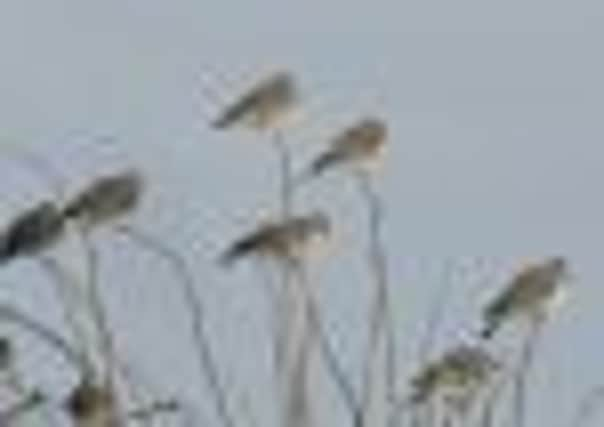Outdoors: Wood pigeons can be a pest, but tasty as well


Some birds will even penetrate far up highland glens on feeding forays, where they run the gauntlet of marauding peregrines.
Unfortunately, the wood pigeon is also a major agricultural pest, causing widespread damage to crops. As a keen vegetable gardener, I learned quickly that it is essential to put a protective net over the vegetable patch if there are wood pigeons about, especially when brassicas such as broccoli or Brussels sprouts are being grown. Otherwise, the end result is not dissimilar to a strimmer being applied zealously to the crops.
Advertisement
Hide AdThe wood pigeon has long been regarded as a nuisance, a fact highlighted by John Clare’s 19th-century poem, The Shepherd’s Calendar: Wood pigeons too in flocks appear, By hunger tam’d from timid fear,…Picking the green leaves want bestows, Of turnips sprouting thro the snows.
Yet despite this inherent ability to cause damage, the wood pigeon has always been a bit of a favourite of mine. Its abundance means that few people give the wood pigeon a second glance, but it is, in fact, a rather attractive bird thanks to its pinkish breast and blueish grey upperparts. The white, almost crescent-shaped flashes on the neck lend the bird its other name of ring dove.
I enjoy the persistent cooing of a wood pigeon that is so much a feature of spring and summer. It is a soothing noise, often heard early in the morning, and when I hear it, lying half asleep in bed, I know instantly that the weather is going to be fine and settled. On such days, when wood pigeons are in a frisky mood, the sky is often enlivened by their undulating territorial display flight that ends with a sharp crack of the wings.
In times past the wood pigeon was widely eaten but rather peculiarly they were also prized for their medicinal properties. John Keogh’s Zoologia Medicinalis Hibernica of 1739 refers to pigeons being cut up alive and when applied to any place pained, they ease the pain, and draw away the malignity. In Scotland, a butchered pigeon was used as a cure for adder bites and the innards were believed to be a good laxative for cattle. Pigeon blood was said to be useful for curing blood-shot eyes and the dung for treating gout and other ailments.
One of the reasons for the success of the wood pigeon is its prolonged breeding season with active nests being recorded in Scotland in virtually every month of the year. The nest consists of a rather flimsy platform of sticks, often in a small conifer, which makes it rather conspicuous to predators such as magpies and squirrels. Wood pigeons breed in my garden every year, yet in most instances the eggs or young squabs are eventually predated upon. Unlike the handsome adults, the squabs when in the nest are ugly creatures, with the beak appearing impossibly large and the bald head sporting unkempt hairy tufts. When the parent birds arrive to feed them, the youngsters scream loudly in eager anticipation.
By autumn, most wood pigeons have ceased breeding and start to form large flocks that often congregate over fields of cereal stubble. Numbers are swelled by incoming migrants, and it is estimated that up to 1.8 million birds may be roaming the Scottish countryside during the winter.
Advertisement
Hide AdWood pigeons are quite wary and flighty birds and will take to the air when frightened, with a surprisingly loud clatter of wings. If I am heading out badger watching, a large flock of wood pigeons exploding out of the trees on my approach to the sett can easily ruin an evening’s viewing by delaying their emergence. I am sure that many other animals and birds also take advantage of the early warning system that wood pigeons inadvertently provide them with.
Although it is a popular quarry among shooters, it is a shame that we seem to have largely lost our taste for pigeon meat. The wood pigeon is one of the finest flavoured birds around – much superior to pheasant in my view – and it seems to me that our huge flocks are a much under-utilised natural food resource.